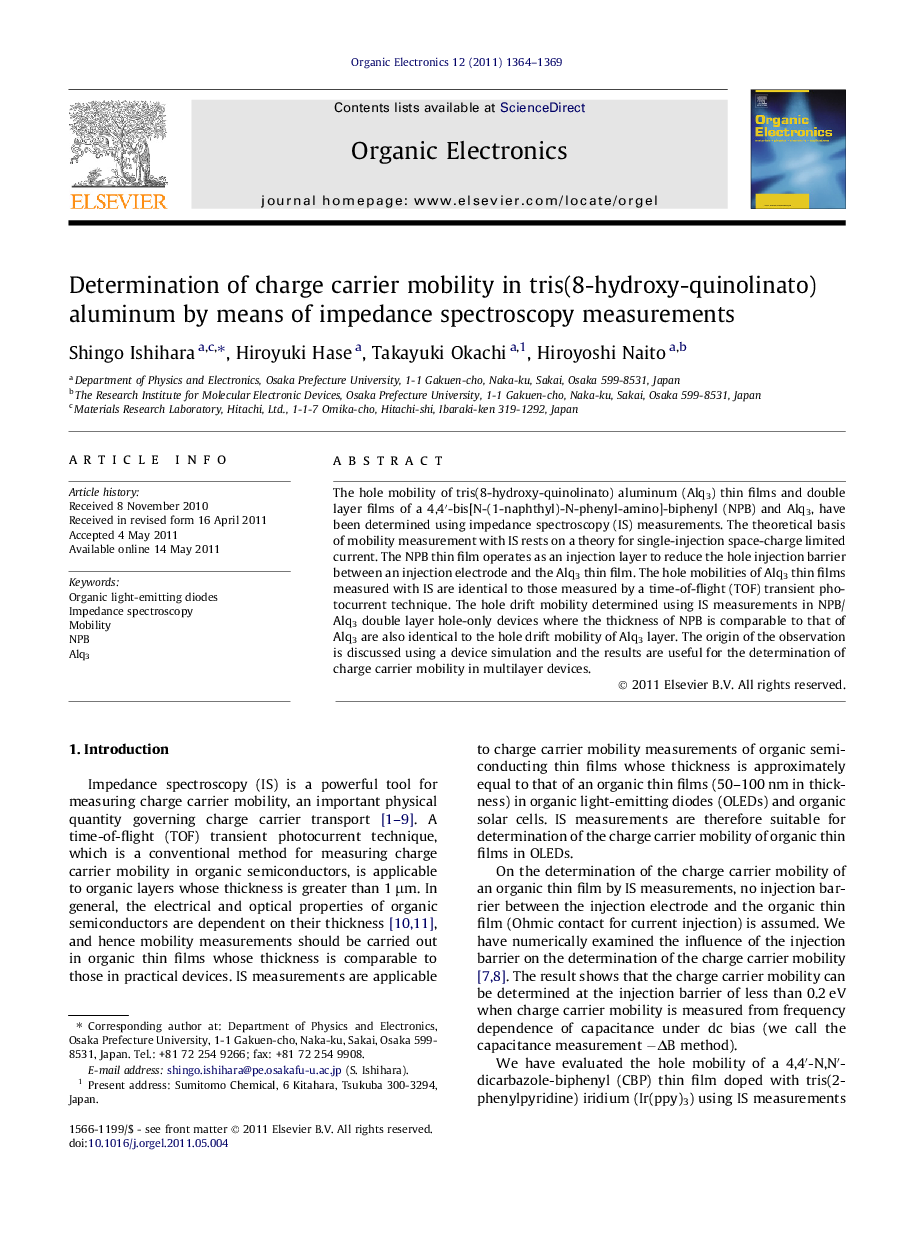| کد مقاله | کد نشریه | سال انتشار | مقاله انگلیسی | نسخه تمام متن |
|---|---|---|---|---|
| 1267665 | 972370 | 2011 | 6 صفحه PDF | دانلود رایگان |

The hole mobility of tris(8-hydroxy-quinolinato) aluminum (Alq3) thin films and double layer films of a 4,4′-bis[N-(1-naphthyl)-N-phenyl-amino]-biphenyl (NPB) and Alq3, have been determined using impedance spectroscopy (IS) measurements. The theoretical basis of mobility measurement with IS rests on a theory for single-injection space-charge limited current. The NPB thin film operates as an injection layer to reduce the hole injection barrier between an injection electrode and the Alq3 thin film. The hole mobilities of Alq3 thin films measured with IS are identical to those measured by a time-of-flight (TOF) transient photocurrent technique. The hole drift mobility determined using IS measurements in NPB/Alq3 double layer hole-only devices where the thickness of NPB is comparable to that of Alq3 are also identical to the hole drift mobility of Alq3 layer. The origin of the observation is discussed using a device simulation and the results are useful for the determination of charge carrier mobility in multilayer devices.
Figure optionsDownload as PowerPoint slideHighlights
► Hole drift mobilities of Alq3 thin films with 5-nm-thick NPB injection layers are determined using impedance spectroscopy (IS) measurements.
► IS measurements enable us to measure drift mobilities of semiconductor thin films whose thickness is ∼ 100 nm.
► An injection layer is essential for measurements of drift mobilities in semiconductor thin films with wide band gaps.
► Hole drift mobilities of Alq3 thin films are determined even using 310-nm-thick NPB hole injection layers.
Journal: Organic Electronics - Volume 12, Issue 8, August 2011, Pages 1364–1369